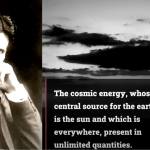Have you ever found yourself questioning the authenticity of videos from the International Space Station (ISS)?
As a skeptic, it’s natural to wonder if the footage we see is genuine or merely an elaborate hoax. Some conspiracy theorists argue that NASA employs wires to simulate zero gravity, making astronauts appear to be floating when they are actually on the ground. But can there be any truth to these allegations? Is it plausible that NASA is fabricating spacewalks and other activities on the ISS? Surprisingly, recent evidence suggests that this may indeed be the case.
The Viral Video Exposé
A recently viral YouTube video purports to reveal a concrete evidence of astronauts using wires to stabilize themselves during a spacewalk. The footage features a group of astronauts working outside the ISS, seemingly in zero gravity. However, a closer examination appears to show one astronaut using a wire for stabilization. The wire is visible moving in the background, and the astronaut’s movements seem to synchronize with those of the wire.
The video proceeds to present more instances of wires allegedly being used by other astronauts during the same spacewalk. One astronaut appears to grasp a wire for stability, while another astronaut’s arm seemingly reaches out to grab something that isn’t there.
The video concludes with the assertion that this is irrefutable proof that NASA is staging spacewalks on the ISS using wires. The narrator contends that anyone who doesn’t accept this evidence is “brainwashed” and incapable of recognizing the truth.
Exploring NASA’s History of Deception
To better understand these allegations, it’s essential to examine NASA’s history and previous instances of the alleged deception. The Apollo moon landings have long been a source of controversy and conspiracy theories, with some arguing that they were staged to win the space race against the Soviet Union. This historical context may provide some insight into the motivations behind fabricating spacewalks on the ISS if the claims are true.
Methods of Creating Zero Gravity Illusions
It’s also crucial to explore the various techniques that can be employed to create the illusion of zero gravity. For example, parabolic flights can simulate weightlessness for short periods, while wires and harnesses can be used to suspend individuals, giving the appearance of floating. By understanding these methods, we can better assess the likelihood of NASA employing such techniques to stage spacewalks on the ISS.
The Role of CGI and Green Screens
Another aspect worth investigating is the potential use of computer-generated imagery (CGI) and green screens to fabricate spacewalks and other activities on the ISS. Advances in technology have made it increasingly possible to create realistic, convincing visuals that can deceive the viewer. By examining the role of CGI and green screens, we can better understand how such manipulations might be utilized to stage spacewalks on the ISS.
The Psychology of Belief and Conspiracy Theories
Understanding why individuals are drawn to conspiracy theories, such as the idea of staged spacewalks on the ISS, requires examining psychological factors like cognitive dissonance and confirmation bias. Cognitive dissonance occurs when a person holds contradictory beliefs or encounters information that challenges their existing views. Confirmation bias, on the other hand, is the tendency to seek out and favor information that supports one’s beliefs while disregarding evidence that contradicts them. These factors can contribute to the acceptance of alternative theories, despite overwhelming evidence supporting the mainstream scientific consensus.
In Conclusion: Pursuing Truth Through Open-Mindedness
While the allegations of staged spacewalks on the ISS may seem far-fetched, it’s essential to maintain an open mind and examine the evidence presented in the viral video. By considering the historical context, various methods of simulating zero gravity, and the potential use of CGI and green screens, we can form a more informed opinion on the legitimacy of these claims.
Moreover, understanding the psychological factors that contribute to the acceptance of conspiracy theories can help us approach such ideas with a balanced perspective. It is crucial to acknowledge that the pursuit of truth involves questioning established beliefs and exploring alternative viewpoints.
Encouraging viewers to watch the viral video can foster critical thinking and promote open-mindedness. Regardless of whether the claims are valid, engaging in a healthy debate and analyzing the evidence is an essential part of the quest for knowledge.
We invite you to watch the video in question and decide for yourself if there is any truth to the allegations of faked spacewalks on the ISS. Remember, the pursuit of truth requires skepticism, open-mindedness, and the willingness to explore new ideas.




















